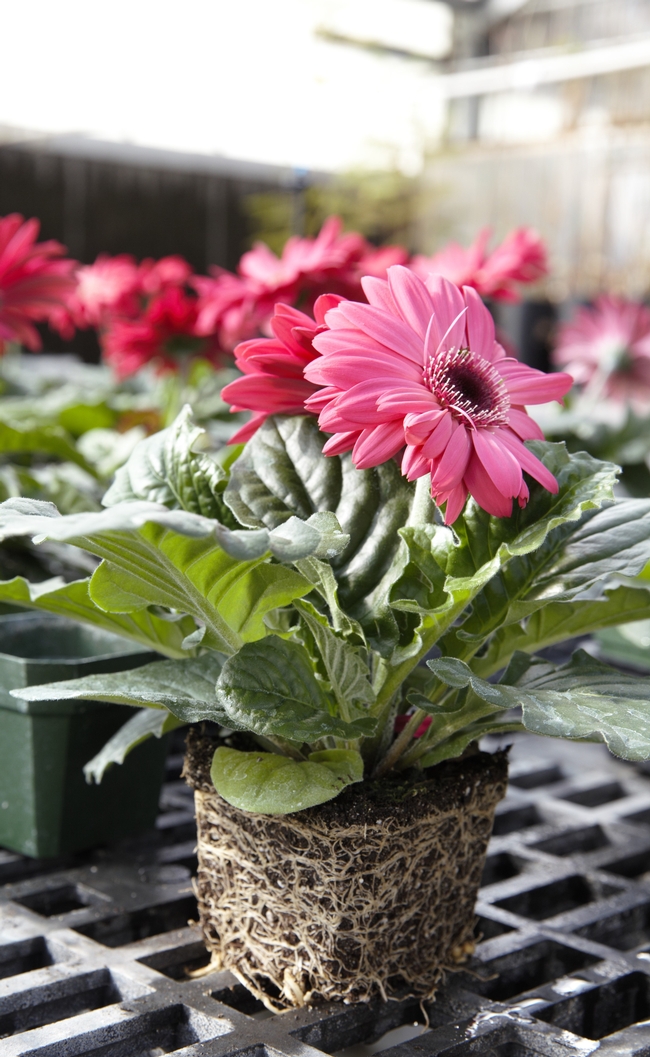Generally, fungicides need to be applied preventatively, before infection occurs, to be most effective in controlling diseases. But what if Phytophthora fungicides are inadvertently applied after root infection? What can be done to improve their timing and effectiveness?
A series of experiments evaluated the efficacy of 8 commercially available biological and conventional fungicides for the management of crown rot on Gerbera caused by Phytophthora cryptogea. The fungicides were either applied before the pathogen was introduced to the soil (preventatively) or after the pathogen was introduced to the soil and root infection had already occurred. The new conventional fungicides oxathiapiprolin (Segovis®) and mandipropamid (Micora®) provided effective preventative control of crown rot. None of the other 6 tested fungicides effectively prevented disease in this particularly rigorous evaluation. These ineffective fungicides included mefenoxam (Subdue Maxx®), cyazofamid (Segway®), Aluminum phosphonate (Areca®), etridiazole (Terrazole®) and Trichoderma species (Root Shield Plus®), and Bacillus amyloliquefaciens (Triathlon®).
When mefenoxam (Subdue Maxx ®), was applied to the soil after the soil was infested with P. cryptogea, Gerbera were mostly free of any above-ground and root symptoms. At the end of the experiment, the pathogen was recovered from healthy looking root balls when the roots were cultured in the laboratory (See previous blog post regarding the problem of masking symptoms). The other 7 fungicides were ineffective when applied after the soil was inoculated; the treated plants eventually died although more slowly than the untreated plants.
It is important to time the application of Phytophthora fungicides to prevent infection. Applications can be made prior to environmental conditions that are conducive to propagule spread and infection, such as before rainy periods. If disease is detected in the nursery crop, it is important that diseased plants should be rogued from the crop early, before fungicides are applied. A scout should key in on above ground symptoms and confirm that roots or root crowns are rotted. If diseased plants are found, nearby plants that aren't necessarily showing above ground symptoms need to be checked for root rot too. All plants with root symptoms should be rogued, and fungicides could be applied to nearby plants to prevent infection from outlying infectious propagules.
See Phytophthora above-ground and root symptoms:
For a complete research report: please contact me at satjosvold@ucanr.edu
This fungicide evaluation was partially funded by the California Cut Flower Commission (KKRF Endowment) and California Association of Nurseries and Garden Centers (CANERS Endowment).
